Lacquer Chamber: reform of East Asian lacquerware
by Kenta Takeshige
Spaces called "Lacquer Chamber" or "Chinese Room" can be found in many European countries, including France, Germany, and Italy. It is a luxurious and exotic lacquered room with walls covered with Asian lacquer or/and japanning lacquer panels.
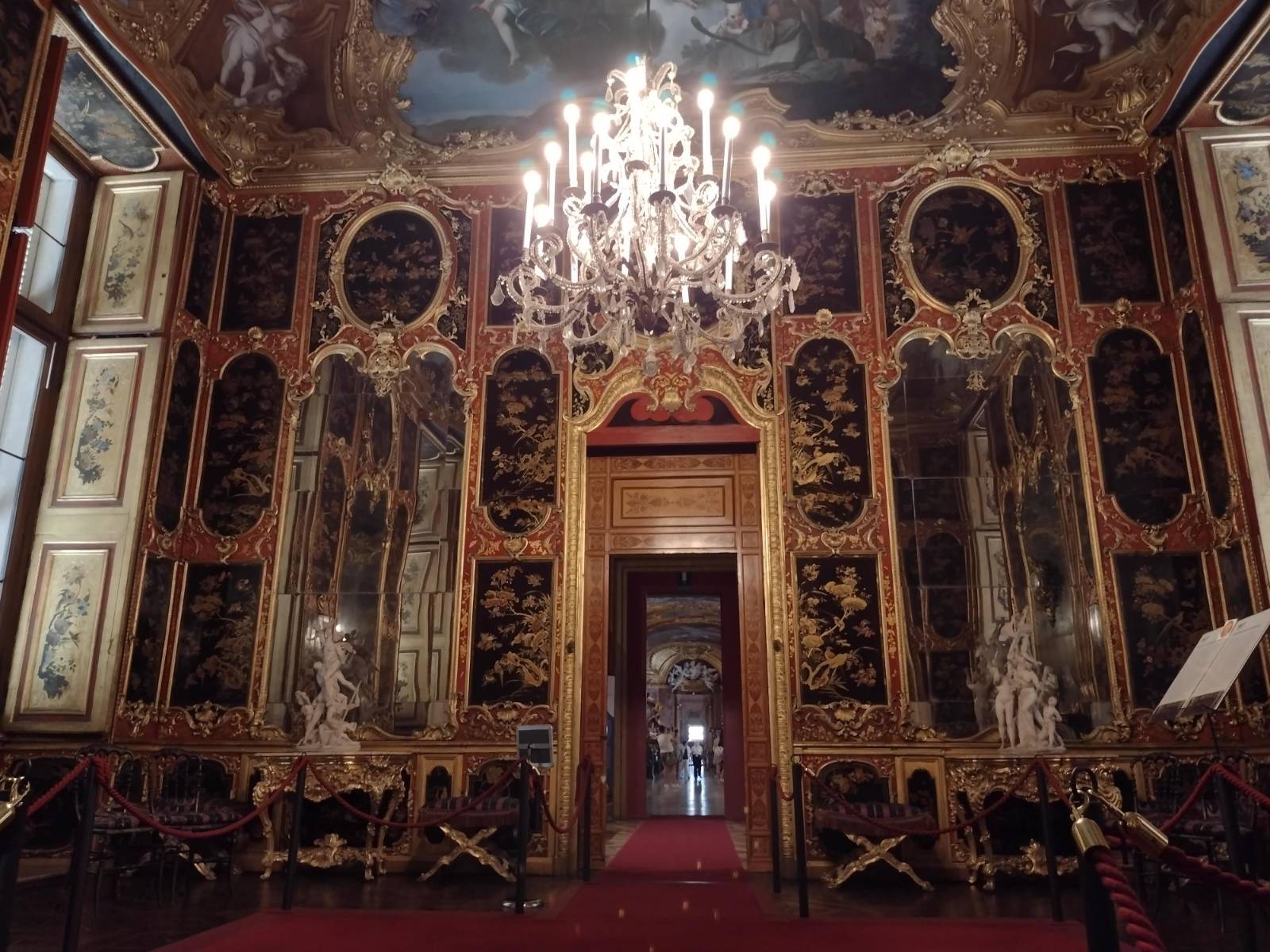
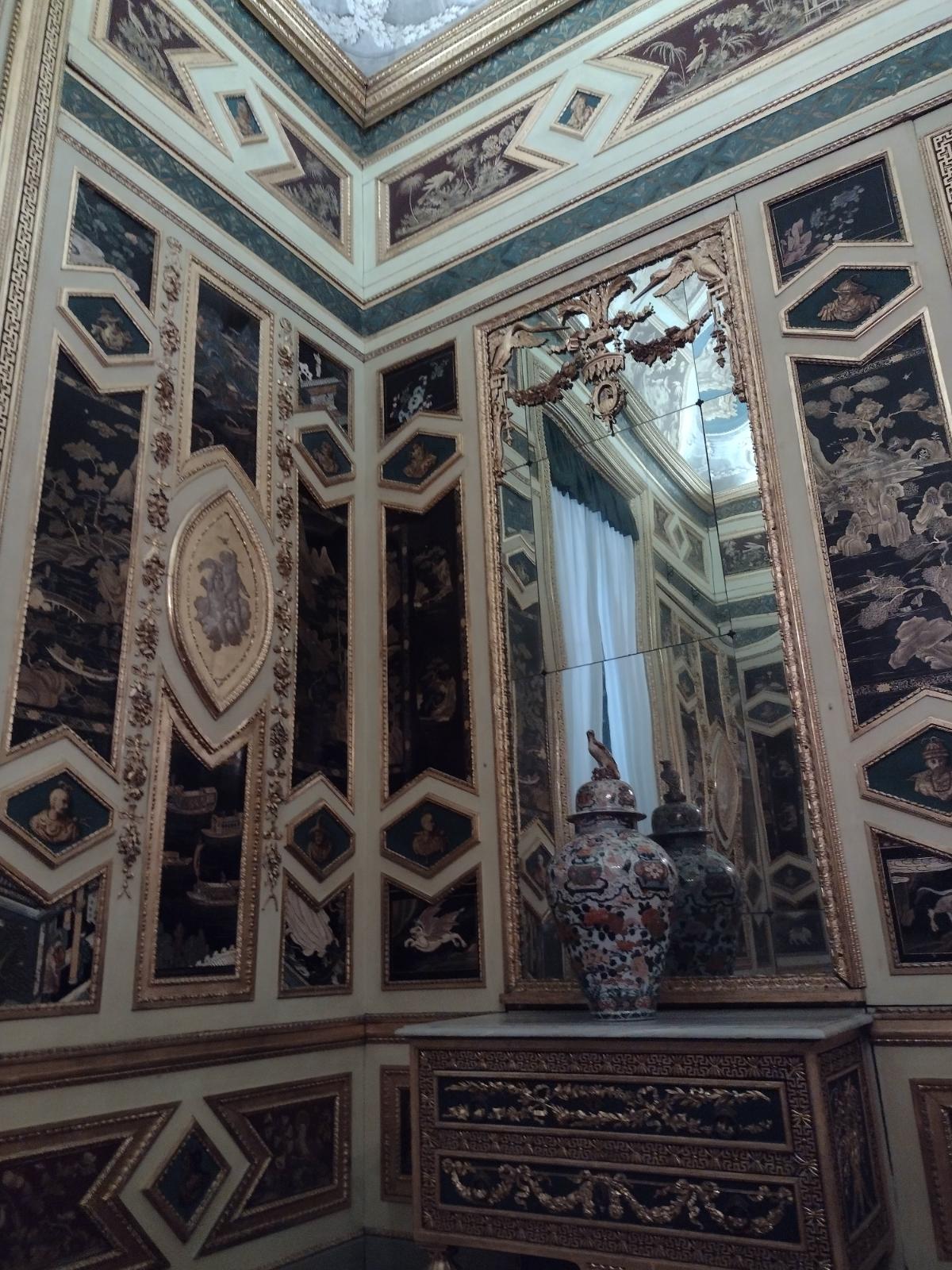
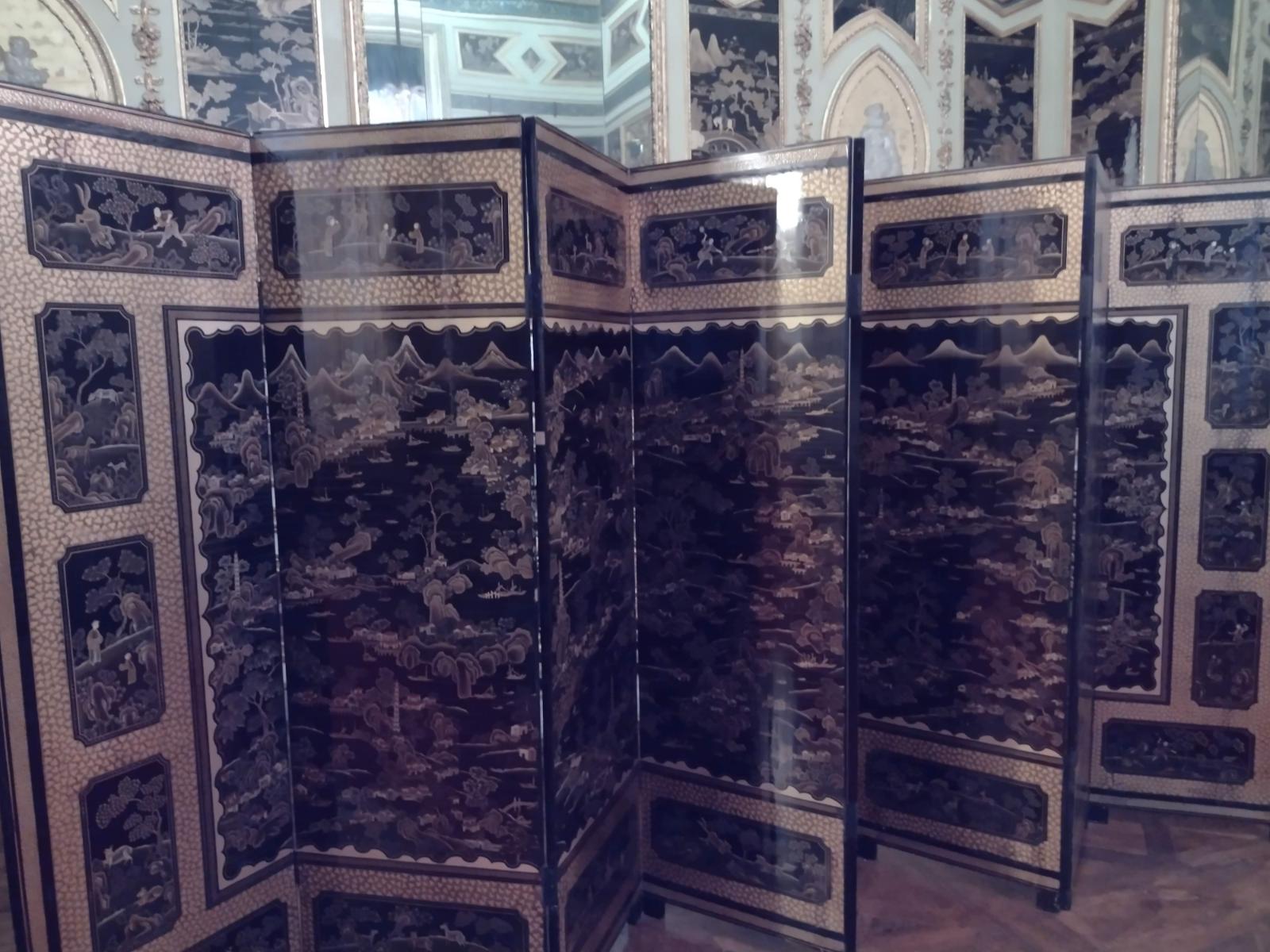
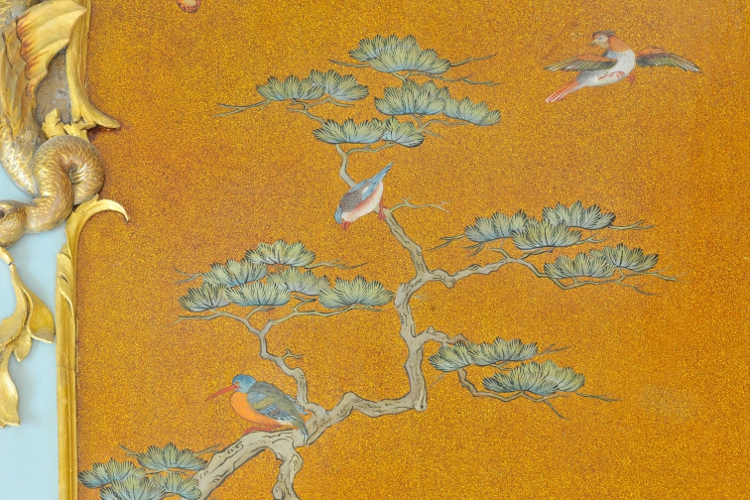
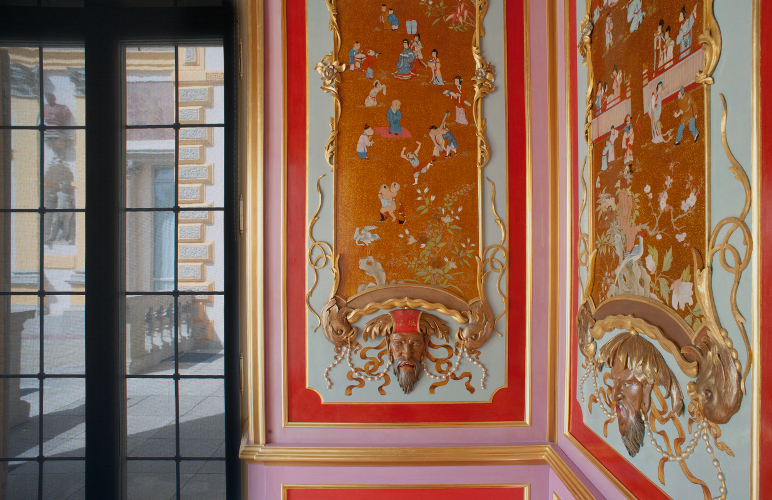
In palaces and castles across Europe, various efforts were made to make effective use of rare lacquerware imported from Asia. Existing lacquered furniture was dismantled into panels and
reused as decorative materials for new styles of furniture, or the entire lacquerware was decorated
with ornate carved metal fittings, often renovating it into a Western-style decorative form. Oriental lacquerware was not only considered a novelty or a status item to possess but was also arranged to harmonize with the aesthetic beauty of European interior decoration.
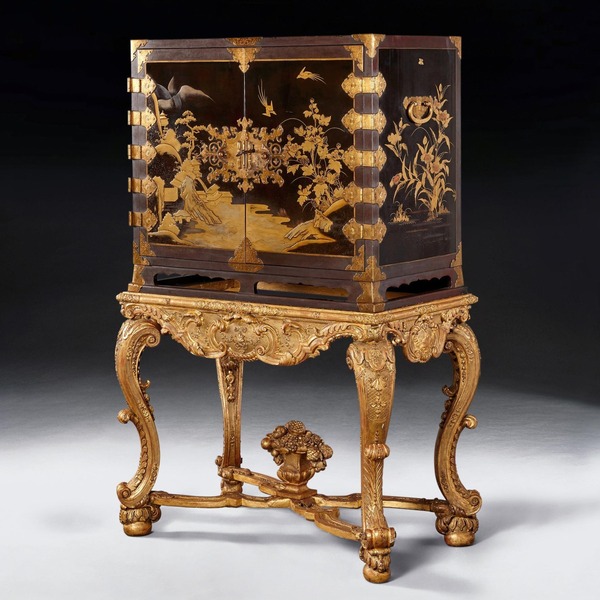
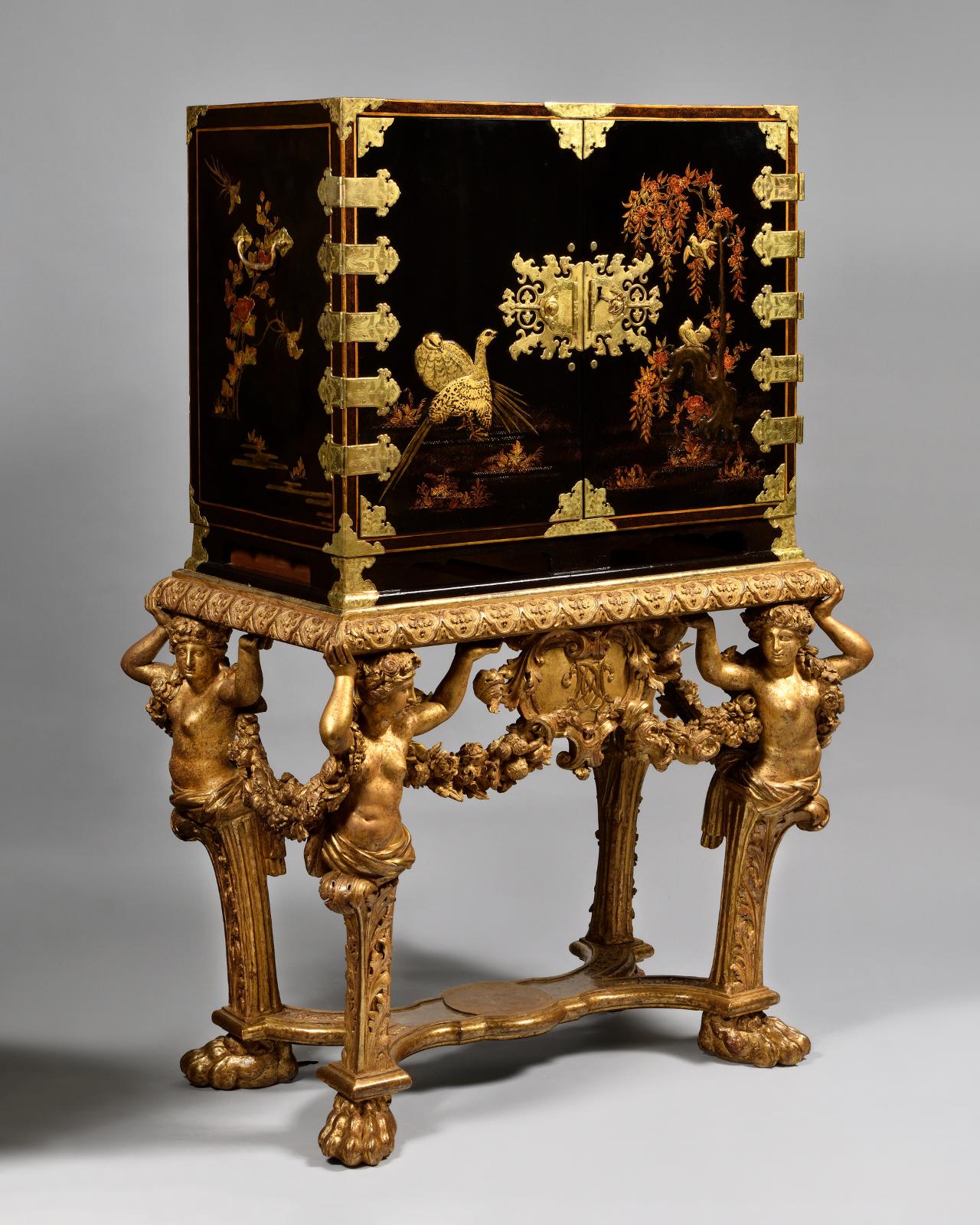
Fig. 31, 32: Examples of cabinet on stand. Particularly fascinating the idea and fact that "imported East Asian lacquerware is not used as is, but rather reprocessed to suit local needs." This approach is put into practice in a variety of ways, as noted in the text. Among these, I would like to draw your attention once again to the example of a Japanese-made export Maki-e chest of drawers that has been transformed into a cabinet-on-stand. This seems to be a search for a way to compromise under the umbrella of stylistic beauty, while respecting the boundaries between different worlds, in a fusion of two worlds simultaneously.
The application of Maki-e panels on Rococo furniture, which is implemented under a different concept – and which is still surprising to me – goes further than this eclectic style and can be seen as a forceful means of stylistic conformity.
The Louis XIV style (Baroque style 1643-1715) was established in France from the mid-17th century. Louis XIV, known as the "Sun King", established the absolute monarchy of the Bourbon dynasty in France. André-Charles Boulle (1642-1732), who worked as a royal cabinetmaker "Ébéniste du Roy" under the Sun King, pioneered a new inlay technique called the "Boulle Technique" (Boulle Marquetry).
The Louis XV style (Rococo style 1723-1774) flourished, sandwiching the Régence style that followed. In contrast to the masculine and linear Baroque style, the Rococo style was feminine and composed of delicate curves. The design, which favoured lightness over heaviness, met the needs of the emerging female patrons. Asian lacquerware, which was widely imported in the 17th century, became an old-fashioned furniture style that felt strange. However, lacquer decoration itself did not fade, and there was a strong demand for a Rococo style that would harmonize the rare and valuable Asian lacquerware into living spaces.
It is thought that the practice of dismantling imported lacquerware, removing the panels, and reusing them began with the modification of Chinese Coromandel folding screens (Fig. 27, 28). Bernard II van Risenburgh (1696?-1765?), a furniture maker in France during the reign of Louis XV, is famous for actively producing furniture using Japanese Maki-e panels.
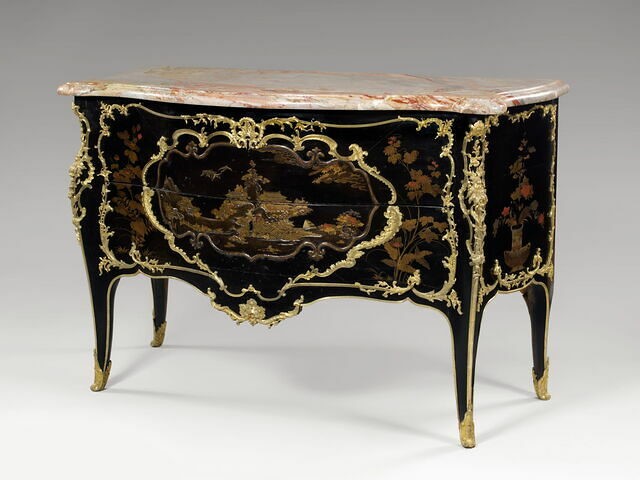
Marchchands-Merciers1, a high-end art dealer dealing in Oriental lacquerware, supplied furniture makers like him with lacquer panels disassembled from imported 17th century lacquerware that had become outdated antiques. Asian lacquer panels were applied to the main parts of newly manufactured furniture, and the surrounding areas and side panels were often supplemented with japanning techniques such as Vernis Martin.
‘Lacquer veneers of this kind were set like precious stones in finely chased ormolu2 mounts, which not only concealed the joints but also even overlapped with the lacquer decoration, enriching it with a sculptural dimension and articulating it in elegantly swirling linear rhythms.’3
Maki-e panels used in Rococo-style commodes were veneered in a flowing manner on the curved surfaces of the furniture. Considering the form of lacquerware exported from Japan, it is unlikely that Maki-e furniture with such curved surfaces were manufactured in Japan. In other words, it is thought that the original flat Maki-e panels were bent to fit the curved surfaces of the Rococo-style commodes when they were transplanted. This process is described by André Jacques Roubo (1739-1791) in his book "L’art du Menuisier et Ébéniste" as follows:
‘Individual panels were fixed in a cushioned press and cut in the vertical plane parallel to the lacquer decoration, which the panel often bore on both sides. Once the reverse side of the wooden support had been planed down to a thickness of only 1 to 2 mm, at least one line thick, the desired section of the decoration could be cut out, heated so that it could be bent, and then veneered onto the usually curving fronts and sides of commodes.’4
Taka Maki-e has complex height differences applied on black lacquer surface as hard as stone. It would have required a great deal of technical skills and care to bend the delicate Taka Maki-e panels while maintaining a beautiful coating without causing any cracks. There is a new research has been conducted on this issue.5
-
In Paris, the guild system, in place since the late Middle Ages, prohibited craftsmen from working with any material with which they had not undergone a formal apprenticeship. Only high-class art dealers "marchand merciers", who were outside the scope of the guild system, therefore, could mount Chinese porcelains with gilt-bronze handles and stands, fit the cabinetmaker's furniture with Oriental lacquer panels or Sèvres porcelain decorations, and supply furniture with opulent gilt-bronze (or ormolu) mounts. ↩
-
Ormolu is the gilding technique of applying finely ground, high-carat gold–mercury amalgam to an object of bronze, and for objects finished in this way. The mercury is driven off in a kiln leaving behind a gold coating. The French refer to this technique as "bronze doré", in English, it is known as "gilt bronze". ↩
-
Quote: Monika Kopplin, "European Lacquer", Hirmer Verlag GmbH, 2010. Pg. 95. ↩
-
André Jacques Roubo,"L’art du Menuisier et Ébéniste", Paris, 1769-75. quoted from "European Lacquer" Monika Kopplin, Hirmer Verlag GmbH, 2010. Pg. 94-95, 107. ↩
-
Christina Hagelskamp, Arlen Heginbotham & Paul van Duin, "Bending Asian lacquer in eighteenth-century Paris: New discoveries", 2016, Studies in Conservation, 61:sup3, 91-96. ↩
